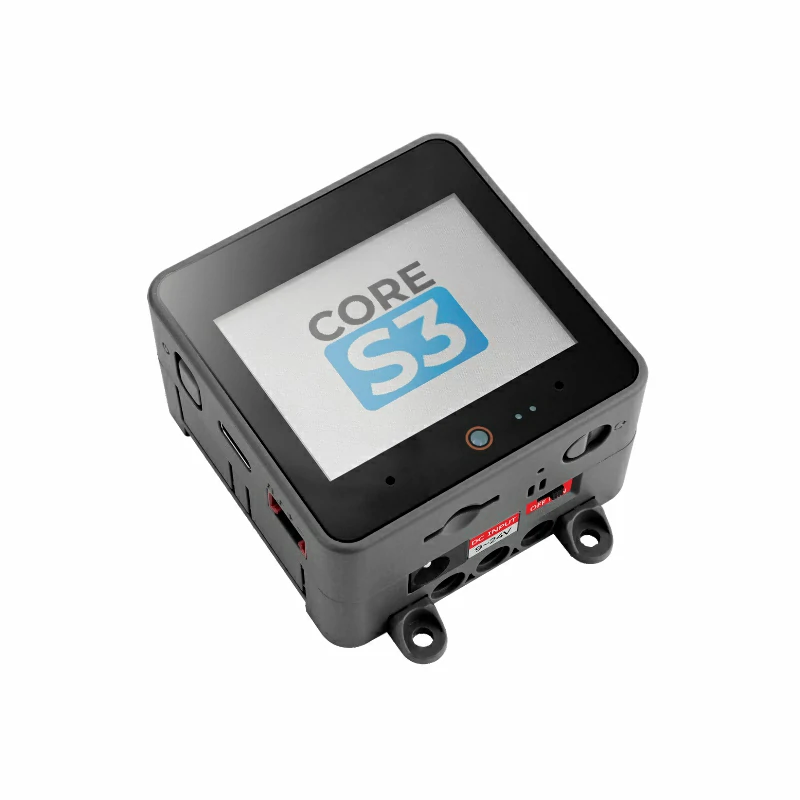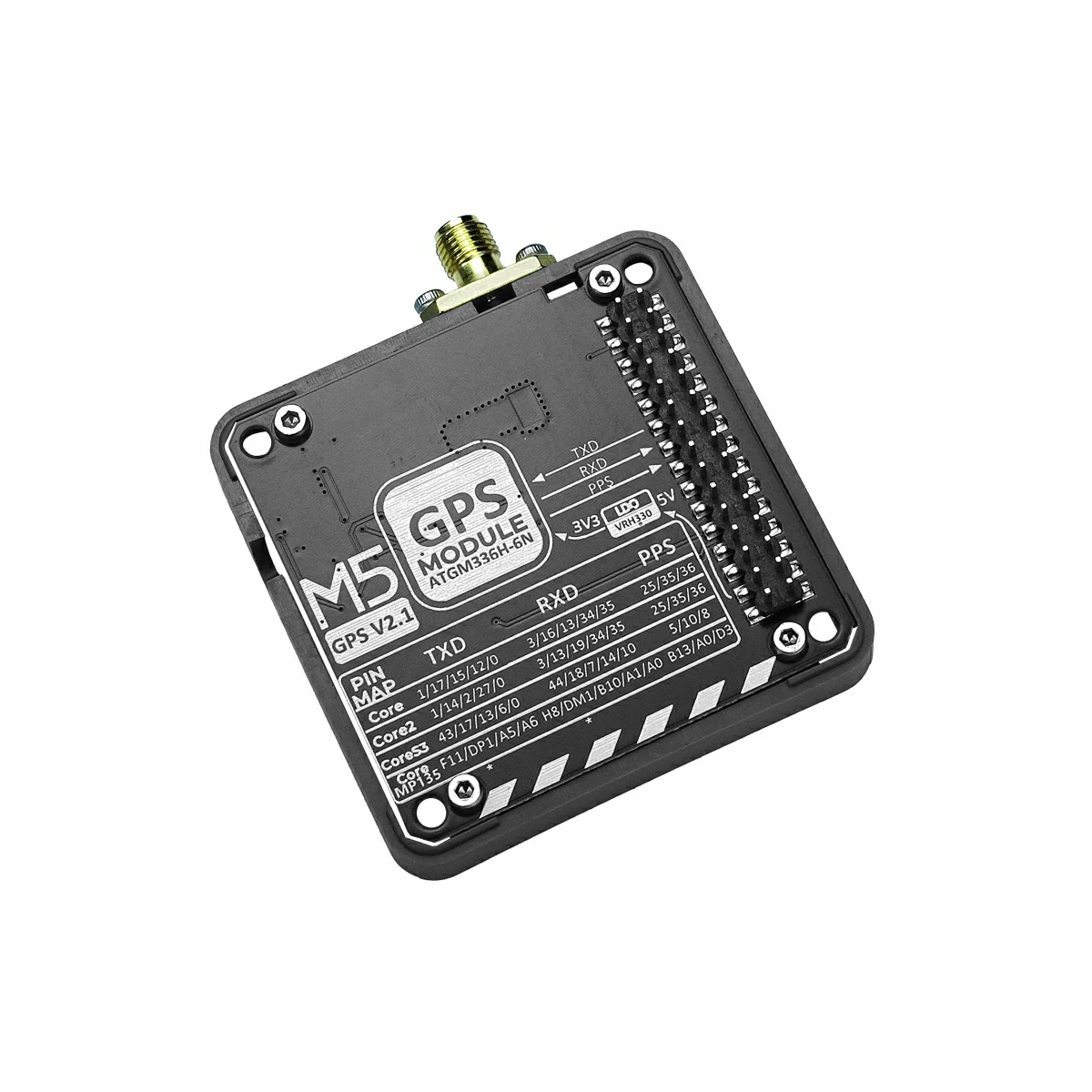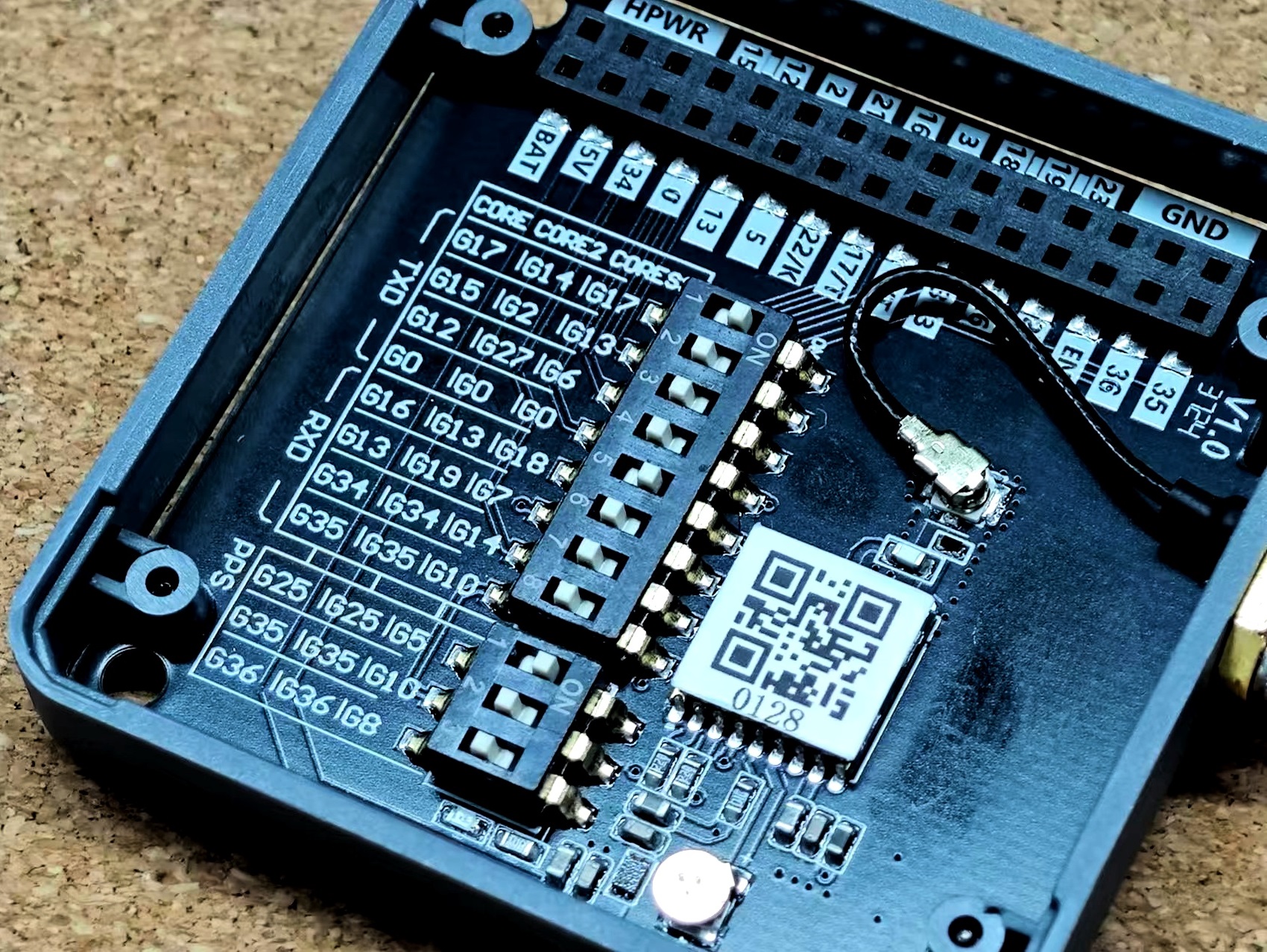Module GPS v2.0/v2.1 Arduino 使用教程
1. 准备工作
1. 环境配置: 参考Arduino IDE上手教程完成 IDE 安装,并根据实际使用的开发板安装对应的板管理,与需要的驱动库。
2. 使用到的驱动库:
3. 使用到的硬件产品:



TinyGPSPlus 库安装
由于 Arduino library 管理中的 TinyGPSPlus 版本较旧且未完全兼容,需要访问TinyGPSPlus - M5Stack Github, 手动下载。并安装放置到 Arduino 库文件路径中。
库管理路径
Windows:
macOS:
Linux:
C:\Users\{username}\Documents\ArduinomacOS:
/Users/{username}/Documents/ArduinoLinux:
/home/{username}/Arduino2. 案例程序
- 1. 根据实际连接的设备,在程序中修改实际使用的 IO 信息。本教程中使用的主控设备为 CoreS3, Module GPS v2.0/v2.1 堆叠后其对应的 M5-Bus 总线 IO 为
G18(RX),G17(TX)。
Module GPS v2.0/v2.1 还支持通过底部的 DIP 拨码开关切换引脚的连接,可根据实际需求进行调整。下方左图为 Module GPS v2.0,右图为 Module GPS v2.1,其中黄线框住的部分是 v2.1 相较于 v2.0 多出的可选择引脚。


- 2. 参考TinyGPSPlus中的
UnitGPSExample案例程序,修改对应的 UART 初始化引脚 IO。基于 M5Unified 和 M5GFX 为该案例程序添加基础的坐标显示功能。

cpp
1 2 3 4 5 6 7 8 9 10 11 12 13 14 15 16 17 18 19 20 21 22 23 24 25 26 27 28 29 30 31 32 33 34 35 36 37 38 39 40 41 42 43 44 45 46 47 48 49 50 51 52 53 54 55 56 57 58 59 60 61 62 63 64 65 66 67 68 69 70 71 72 73 74 75 76 77 78 79 80 81 82 83 84 85 86 87 88 89 90 91 92 93 94 95 96 97 98 99 100 101 102 103 104 105 106 107 108
/*
*SPDX-FileCopyrightText: 2024 M5Stack Technology CO LTD
*
*SPDX-License-Identifier: MIT
*/
#include "M5Unified.h"
#include "M5GFX.h"
#include "MultipleSatellite.h"
static const int RXPin = 18, TXPin = 17;
static const uint32_t GPSBaud = 115200;
MultipleSatellite gps(Serial1, GPSBaud, SERIAL_8N1, RXPin, TXPin);
void displayInfo();
void setup()
{
M5.begin();
Serial.begin(115200);
gps.begin();
gps.setSystemBootMode(BOOT_FACTORY_START);
Serial.println(F("DeviceExample.ino"));
Serial.println(F("A simple demonstration of TinyGPSPlus with an attached GPS module"));
Serial.print(F("Testing TinyGPSPlus library v. "));
Serial.println(TinyGPSPlus::libraryVersion());
Serial.println(F("by Mikal Hart"));
Serial.println();
String version = gps.getGNSSVersion();
Serial.printf("GNSS SW=%s\r\n", version.c_str());
delay(1000);
// Set satellite mode
gps.setSatelliteMode(SATELLITE_MODE_GPS);
M5.Display.setFont(&fonts::FreeMonoBold12pt7b);
}
void loop()
{
// Update data
gps.updateGPS();
displayInfo();
delay(10);
}
void displayInfo()
{
Serial.print(F("Location: "));
Serial.printf("satellites:%d\n", gps.satellites.value());
if (gps.location.isUpdated()) {
Serial.print(gps.location.lat(), 6);
Serial.print(F(","));
Serial.print(gps.location.lng(), 6);
Serial.print(F("\n"));
M5.Display.fillRect(0, 0, 320, 60, BLACK);
M5.Display.setCursor(0, 0);
M5.Display.printf("Location: \nLat: %f\nlng: %f\n", gps.location.lat(), gps.location.lng());
} else {
M5.Display.fillRect(0, 0, 320, 60, BLACK);
M5.Display.setCursor(0, 0);
M5.Display.print("Location: \n");
M5.Display.print("Lat: ---------\n");
M5.Display.print("lng: ---------\n");
Serial.print(F("INVALID\n"));
}
Serial.print(F(" Date/Time: "));
if (gps.date.isUpdated()) {
Serial.print(gps.date.month());
Serial.print(F("/"));
Serial.print(gps.date.day());
Serial.print(F("/"));
Serial.print(gps.date.year());
M5.Display.fillRect(0, 100, 320, 60, BLACK);
M5.Display.setCursor(0, 100);
M5.Display.printf("Date/Time: %d/%d/%d\n", gps.date.month(), gps.date.day(), gps.date.year());
} else {
Serial.print(F("INVALID"));
}
Serial.print(F(" "));
if (gps.time.isUpdated()) {
if (gps.time.hour() < 10) Serial.print(F("0"));
Serial.print(gps.time.hour());
Serial.print(F(":"));
if (gps.time.minute() < 10) Serial.print(F("0"));
Serial.print(gps.time.minute());
Serial.print(F(":"));
if (gps.time.second() < 10) Serial.print(F("0"));
Serial.print(gps.time.second());
Serial.print(F("."));
if (gps.time.centisecond() < 10) Serial.print(F("0"));
Serial.print(gps.time.centisecond());
M5.Display.fillRect(0, 160, 320, 60, BLACK);
M5.Display.setCursor(0, 160);
M5.Display.printf("Time: %d:%d:%d.%d\n", gps.time.hour(), gps.time.minute(), gps.time.second(),
gps.time.centisecond());
} else {
Serial.print(F("INVALID"));
}
Serial.println();
delay(1000);
}3. 编译上传
1. 下载模式:不同设备进行程序烧录前需要下载模式,不同的主控设备该步骤可能有所不同。详情可参考Arduino IDE上手教程页面底部的设备程序下载教程列表,查看具体的操作方式。
CoreS3 长按复位按键 (大约 2 秒) 直到内部绿色 LED 灯亮起,便可松开,此时设备已进入下载模式,等待烧录。
.gif)
- 2. 选中设备端口,点击 Arduino IDE 左上角编译上传按钮,等待程序完成编译并上传至设备。

4. 卫星定位
连接配套的外置天线,将天线放置在窗边或是户外空旷区域,等待设备成功搜索卫星与获取坐标。

